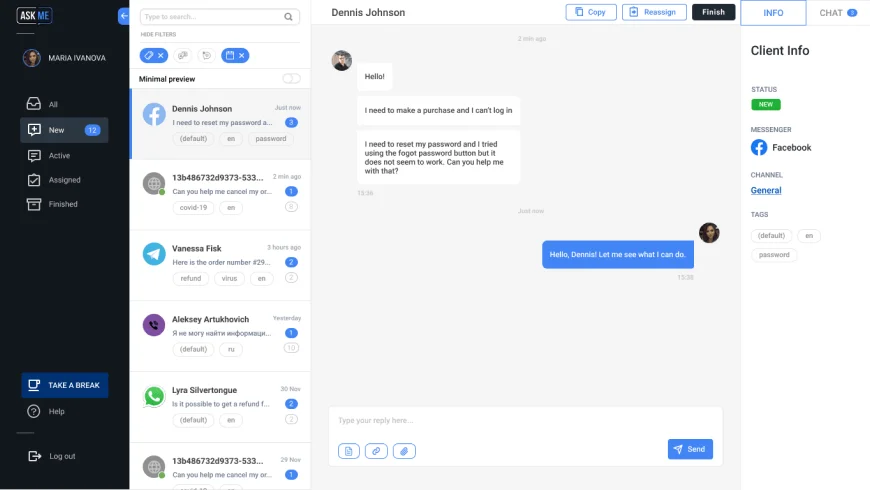The HELENA study started in 2017 to figure out how hybrid approaches have spread into the development of software worldwide. The HELENA team consisting of more than 80 researchers from all over the world investigates the distribution of hybrid software and system development in practice. The HELENA study is ongoing research and final results have not been presented yet. Analysis and simulation in digital models used in electrical and mechanical Computer-Aided Design (CAD) and MBSE (see below) can test changes quickly and economically.
It involves a holistic approach to maintaining quality from the product’s inception. With DevTestOps, it becomes easier for software teams to make updates and improve their products. It also improves collaboration between developers, testers, and operators. Like in the manifesto, testing is no longer done in siloed testing departments but across each phase. DevTestOps came about as an improved version of DevOps with TestOps included. This makes it easier to build, deploy, and develop quality products with fewer bugs.
What is Test Driven Development (TDD)?
The quality of software derives from short development cycles that, in turn, allow for receiving frequent feedback. XP teams practice test-driven development technique (TDD) that entails writing an automated unit test before the code itself. According to this approach, every piece of code must pass the test to be released. So, software engineers thereby focus on writing code that can accomplish the needed function. That’s the way TDD allows programmers to use immediate feedback to produce reliable software. You can learn more about improving software testing in our dedicated article.
In the seventies, Royce (1970) published an article which is considered as the basis for the waterfall-model. His approach aims at reaching the condition of working software delivered on-time and within costs (Royce 1970). Royce proposes to use the waterfall model’s phases with an iterative relationship between successive phases. The process benefits by scoping down the development process to manageable limits (Royce 1970). He furthermore suggests using prototypes to get an early simulation of the final product.
What is the Agile Manifesto?
In Agile, testing is integrated directly into the development process so that bugs are discovered as early and as often as possible. As a result, testers can identify problems at every point in the development process, moving the product quickly towards release. The study results emphasize that it is in our hands to create and maintain the future of agile. Therefore, the publication shall help the readers to build up their own picture of agile trends. We encourage the readers to critically rethink the current agile movement. Bob Martin got in touch with XP, when he“stumbled across Kent Beck’s writings on Extreme Programming” (Lockard and Gifford 2016).

Over time, when the idea is getting popular, it is just watered down the ripples lower and lower. Martin Fowler (2017) mentions that “the real benefits are […] [still on the] technical level”. Therefore, the manifesto does not claim to support executives and business owners [Anonymous].
1 The Agile Manifesto
The Agile Manifesto has principles that expand upon the core values, such as prioritizing the delivery of working software, welcoming changes to requirements, and promoting sustainable development practices. Agile Manifesto emphasizes building projects around motivated individuals. Providing support and trust to the team members can help them to stay motivated and deliver high-quality software.
So, Lean’s main focus is not on time-boxed iterations or specific engineering practices as in XP, but largely on a fast MVP delivery and reducing time waste. The original contributors emphasize that agile methods need to be carefully selected and agile should not be seen as a silver bullet. They underline the importance of considering the variety of different practices and methods that had an influence on the development of the manifesto. In 2002, Highsmith (2002) described the most important principles of agile development from his point of view, such as delivering value to the customer and focusing on individual developers and their skills. He also presented all major agile methods such as Scrum or Extreme Programming. Highsmith (2002) proposed a method of transforming a company into a truly agile organization.
- In addition, automated testing allows developers to detect and fix errors before deployment.
- Arie van Bennekum points out that “scaling Agile is […] a non-issue” (Lockard and Cleff 2016).
- Basic Agile quality practices can be applied to work products in any domain.
- This risk pressures organizations to effectively apply Built-in Quality practices while developing engineered hardware systems and subsystems.
- Additionally, relevant Service-Level Agreements (SLAs), such as Mean Time Before Failure (MTBF) and Mean Time to Repair (MTTR), must be ensured.
- Quality is essential to the agile method, because its main focus is on satisfying customer requirements.
As the name implies, an Agile methodology is focused on responding to change. There are many frameworks teams might use, such as Scrum or Kanban, but at the center of it is a collaborative approach. It reveals the discomfort of some of the contributors with current trends such as certification or commercialization. Furthermore, interesting directions for further evolution of agile development and beyond are identified. Ron Jeffries (2017) thinks that the “blood has been squeezed out of agile”. Another participant [Anonymous] emphasizes this by stating that a lot of people believe they are doing agile with a 3-h stand-up meeting and a backlog.

DevTestOps has a similar culture to DevOps except that in this case, you add continuous testing. Testers should become part of the DevOps team so they can test the software immediately after an update. In DevTestOps, the Development, Testing, and Operations Teams work hand in hand to ensure quality and proper product testing. test process improvement In this article, we are going to look at DevTestOps, its objectives, and processes. We’ll also look at how to get started with DevTestOps, best practices, and why a company should adopt DevTestOps. Technology is always improving, and developers are always trying to find easier and better ways to improve the software.